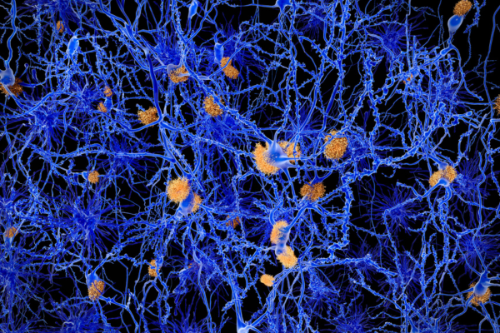Salmon aquaculture faces major health challenges, including the high incidence of bacterial diseases. In Chile, Salmonid Rickettsial Septicemia (SRS), caused by the bacterium Piscirickettsia salmonis, is one of the main causes of fish mortality, resulting in significant economic losses and reduced competitiveness. Although various vaccination strategies have been developed, disease control still relies on the use of antimicrobials.
In this context, the study "Know Your Enemy: Piscirickettsia salmonis and Phage Interactions Using an In Silico Perspective", published in Antibiotics (Basel), proposes a new perspective on controlling this pathogen. The work by academic Jaime Romero and researcher Carolina Ramírez, from the Food Biotechnology Laboratory at the Institute of Nutrition and Food Technology (INTA) of the University of Chile, analyzes the genome of 79 strains of P. salmonis to identify prophage sequences (phage fragments inserted into bacterial DNA) and anti-phage defense systems.
Among the findings, 70% of the analyzed chromosomes contained prophage regions, as did 75% of the plasmids. Defense mechanisms such as dGTPase, AbiD, SoFIC, and MazEF were also identified, revealing a complex interaction between the bacterium and its bacteriophages. These results open up new possibilities for developing phage-based biocontrol strategies that would reduce the use of antibiotics in salmon farming.
Academic Jaime Romero, coordinator of the Food Biotechnology Laboratory, biochemist, and PhD in Microbiology, explains the scope of the study in more detail.
What is the relevance of studying the interactions between Piscirickettsia salmonis and its phages in the context of national and international salmon farming?
The study of interactions between P. salmonis —the causal agent of Piscirickettsiosis or Salmonid Rickettsial Septicemia (SRS)— and its phages is highly relevant because this facultative intracellular bacterium is one of the main pathogens affecting the salmon aquaculture industry, especially in leading production countries such as Chile, Norway, and Canada.
In Chile, SRS is responsible for multi-million-dollar annual economic losses due to direct mortalities, costs of antibiotic treatments, and trade restrictions associated with the excessive use of antimicrobials. It also poses a risk of generating bacterial resistance and increases the need for more sustainable control alternatives.
In this context, understanding the dynamics between P. salmonis and its bacteriophages (viruses that infect bacteria) allows us to:
- Characterize the bacterium’s anti-phage defense systems (such as CRISPR/Cas, restriction/modification systems, or toxin-antitoxin systems), which can guide the design of more effective therapies and prevent the rapid emergence of phage resistance.
- Identify phage elements with potential as biocontrol tools.
What are “prophage regions” and what aspects would you highlight from the finding of prophage regions and antiphage defense systems in the analyzed genomes of P. salmonis?
Prophage regions are viral DNA sequences (from bacteriophages) integrated into the genome of a bacterium. A prophage is the latent form of a temperate phage that, instead of immediately destroying the bacterium (lytic cycle), inserts its genetic material into the bacterial chromosome and remains there as part of the bacterial DNA. These regions can be complete (intact prophages) or incomplete (fragments or remnants of phages) and can be reactivated under certain conditions, entering the lytic cycle again and producing new viral particles.
Finding prophage regions shows that P. salmonis has been exposed to phage infections throughout its evolution and is therefore susceptible to phage attacks. This suggests that phages have played an important role in its genetic variability and contribute to genomic plasticity.
Detecting systems such as CRISPR/Cas, restriction-modification systems, or other anti-phage defense mechanisms (bacterial immunity) in the genomes indicates that P. salmonis has developed barriers to limit new phage infections.
The discovery of prophages and anti-phage defense systems presents both opportunities and challenges. On the one hand, it might be possible to activate latent prophages to weaken bacterial populations; on the other, a thorough understanding of defense systems is necessary to select effective new strategies.
How might these defense mechanisms contribute to the design of new control strategies, other than the use of antibiotics?
Anti-phage defense mechanisms (such as CRISPR/Cas, restriction-modification systems, and toxin-antitoxin systems) represent natural barriers that limit phage infection, but knowing them in depth makes it possible to transform an obstacle into an opportunity for innovation.
What implications does this study have for the development of therapies to control bacterial diseases in aquaculture?
In general, knowing the integrated prophages opens the possibility of inducing their activation (transition to the lytic cycle) through controlled physical or chemical stimuli, causing the destruction of the bacterium from within without the use of antibiotics. Additionally, understanding how P. salmonis defends itself against phages is key to innovating in biocontrol and advancing toward more sustainable salmon aquaculture without excessive reliance on antibiotics.
Keywords: Piscirickettsia salmonis; aquaculture; phage; prophage; salmonid rickettsial septicemia (SRS)
Reference: Ramírez, C., & Romero, J. (2024). Know Your Enemy: Piscirickettsia salmonis and Phage Interactions Using an In Silico Perspective. Antibiotics, 13(1), 51. https://doi.org/10.3390/antibiotics13010051






